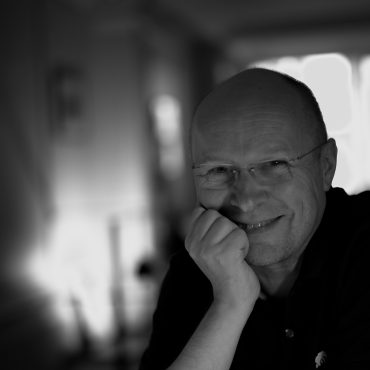
The “Instead” List
Anssi Karttunen
While the list of pieces that appear in cello-piano recitals is incredibly short – same 10 pieces keep circulating in different order – we cellists actually have very large repertoire. Orchestras don’t program much more than 10 Concertos and apart the Bach Suites there are maybe 5 pieces that make their way to concert programs.
There are always multiple reasons for great music falling out of general attention. It may have to do with style, gender, origin, problems of notation, lack of publisher, wrong publisher, fashion, lack of social skill, too keen self promotion or any combination of these. Often the reasons have nothing to do with the quality of the music. And the quality itself is totally dependent on who is the messenger, in the wrong hands most music will sound like bad music. Why certain pieces have survived is probably because they survive performances that don’t understand the style, Why Boccherini for example existed for over a century only in few completely un-stylistic arrangements is because the greatness of his music is totally dependent on the performers understanding of the style.
In planning programs today we are often asked to consider gender, geographic origin or other aspects so it is in our own interest to know as large a repertoire as possible. For each piece you know there will be at least two logical alternatives of equal importance.
If you are considering to play any of the following well-known pieces it would be a great idea to at least consider playing these lesser known pieces. I obviously don’t wish the well-known pieces to disappear from the concerts for ever but they could be given a little rest and the others be given a chance. Imagine how great it would be to come back to the Schubert Arpeggione sonata after a ten year pause. I stopped playing the Schostacovich 1st Concerto for 34 years and I can’t describe how fresh it felt when I played it again.
What makes it difficult to complete this list is the fact that there are much more unknown masterpieces than well-known ones: against the maybe 15 reasonably well known Concertos, for example, one can easily find 200 unknown ones. I have listed the alternative composers usually only once but you should look at other pieces of Liszt, Busoni, Villa Lobos, Enescu, Ginastera, Zimmermann, Weinberg etc..
I have left out all pieces written for me or by my composer friends so that I could at least pretend to be objective, but obviously my heart beats for Henri Dutilleux, Betsy Jolas, Magnus Lindberg, Kaija Saariaho, Pascal Dusapin and many, many other friends of cello.
Cello and Piano:
Franz Schubert: Arpeggione Sonata ___________ Louise Farrenc: Sonata Op. 46
Felix Mendelssohn: Lied ohne Worte ___________ Fanny Hensel: Zwei Stücke
Cesar Franck: (Violin) Sonata ___________ Gabriel Fauré: (Violin) Sonata 1
Max Bruch: Kol Nidrei ___________ Franz Liszt: Lugubre Gondola
Antonin Dvorak: Rondo ___________ Ferruccio Busoni: Serenata
Richard Strauss: Sonata ___________ Alexander von Zemlinsky: Sonata
Camille Saint-Saëns: Sonate 1 ___________ Maurice Emmanuel: Sonate Op.2
Camille Saint-Saëns: Sonate 2 ___________ Jean Cras: Sonate
Claude Debussy: Sonate ___________ Charles Koechlin: Sonate
Gabriel Fauré: Elegy ___________ Josef Suk: Ballade
Gabriel Fauré: Sonate 1 ___________ Heitor Villa Lobos: Sonata 2
Gabriel Fauré: Sonate 2 ___________ André Caplet: Improvisations d’après “Le pain quotidien”
Max Reger: Sonata 1 ___________ Dora Pejacevic: Sonata
Sergei Rachmaninoff: Sonata ___________ Nikolai Miaskovsky: Sonata 1
Dmitri Schostacovich: Sonata ___________ Nikolai Roslavetz: Sonata 1
Francis Poulenc: Sonate (1948) ___________ Georges Enescu: 2nd Sonata (1948)
Sergei Prokofiev: Sonata (1948) ___________ Elliott Carter: Sonata (1948)
Samuel Barber: Sonata (1932) ___________ Leo Ornstein: Sonata 2 (1920)
Bohuslav Martinu: Rossini Variations ___________ Ernst Krenek: Phantasiestück
Bohuslav Martinu: Sonata No 3 (1952)___________ Earle Brown: Music for cello and piano (1955)
Benjamin Britten: Sonata ___________ Alberto Ginastera: Sonata
Alfred Schnittke: Sonata 1 ___________ Galina Ustvolskaya: Grand Duo
Alfred Schnittke: Sonata 2 ___________ Boris Tchaikovsky: Sonata
and the list goes on….
Solo Cello:
Zoltan Kodaly: Solo Sonata ___________ Artur Schnabel: Solo Sonata
Max Reger: Suites 1-3: ___________ Ernest Bloch: Suites 1-3
Paul Hindemith: Solo Sonata ___________ Arnold Bax: Rhapsodic Ballad
Gaspar Cassado: Suite ___________ Luigi Dallapiccola: Ciaccona, Intermezzo e Adagio
George Crumb: Solo Sonata ___________ Ernst Krenek: Suite Op. 84
Benjamin Britten: Solo Suite 1 ___________ Sandor Veress: Sonata for Solo cello
Benjamin Britten: Solo Suite 2 ___________ Sofia Gubaidulina: Ten Preludes
Benjamin Britten: Solo Suite 3 ___________ Donald Martino: Parisonatina al’Dodecafonia
György Ligeti: Solo Sonata ___________ Franco Donatoni: Lame
Krzysztof Penderecki: Suite for Solo cello ___________ Isang Yun: Glissées
and much more…
Concertos
Joseph Haydn: Concerto D ___________ Michael Haydn: Concerto B
Piotr Tchaikovsky: Rococo Variations ___________ Nikolai Miaskovsky: Concerto
Edouard Lalo: Cello Concerto ___________ Jules Massenet: Fantasy D
Camille Saint-Saëns: Concerto 1 ___________ Ricardo Castro: Cello Concerto
Edward Elgar : Concerto ___________ Ernest Bloch: Voice in the Wilderness
Ernest Bloch: Schelomo ___________ André Caplet: Epiphanie
Paul Hindemith: Concerto ___________ Julian Carillo: Concerto in quarter and eigth tones
Erich Korngold: Concerto ___________ Bela Bartok: Rhapsody 1
Samuel Barber: Concerto ___________ Morton Feldman: Cello and Orchestra
Sergei Prokofiev: Concertino ___________ Albert Roussel: Concertino
Sergei Prokofiev: Sinfonia Concertante ___________ Mieszyslaw Weinberg: Fantasia
Dmitri Kabalevsky: Cello Concerto 2 ___________Andre Jolivet: Cello Concerto 2
William Walton: Concerto ___________ B A Zimmermann: Canto di Speranza
Dmitri Shostacovich: Concerto 1 ___________ Boris Tishchenko: Cello Concerto 1
Dmitri Shostacovich: Concerto 2 ___________ Lukas Foss: Concerto
Benjamin Britten: Cello Symphony ___________ Frank Martin: Concerto
Friedrich Gulda: Concerto ___________ Steven Stucky: Voyages for cello and wind ensemble
John Taverner: The Protecting Veil ___________ Elizabeth Maconchy: Epyllion for cello and Strings
Subjects: Artistic Vision, Repertoire
Tags: Concerto, inspiration, Instead, repertoire, Solo Suite, Sonata
